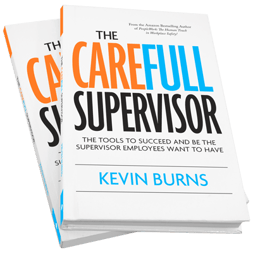As a safety person or senior manager, what keeps you up at night? Are you concerned that your current communication efforts aren't getting you the results you want? Are you worried that you should be training your people more, spending more time with them, guiding them, coaching them, motivating them, communicating with them, encouraging them? Are you worried that someone is going to make that one decision that does not end well?

Maybe you even feel guilty for not doing more. That if you were more effective at doing your job better, they would be able to do their’s better.
Truthfully, there’s never enough time, or energy, or money to invest in your people. And then when events like COVID happen, well all bets are off. Everything you were working on got tossed aside in favor of the urgency of a pandemic.
Now, you are starting to settle into new routines and into a new reality. You are trying to find the most efficient ways to create better safety buy-in by leveraging the most influential people in your organization.
But, do you know where to start?
Take The Assessment
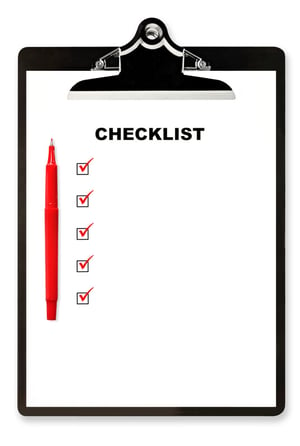 If you do not know where to start, let me help. Start by taking an assessment of:
If you do not know where to start, let me help. Start by taking an assessment of:
- where most of the activity is in your organization,
- where most of your people are,
- where most mistakes are made,
- who makes most of those mistakes (I’m not talking about individuals, I’m referring to position),
- who influences the people who either make or break your safety performance?
You will come to one conclusion. The largest amount of activity, people, mistakes and incidents occur at the frontline. As a result, no one has more of an influence on frontline employees, safety performance, production, morale, motivation, communications, or coaching than a frontline supervisor.
Frontline supervisors or lead hands, foremen, team leads, anyone who oversees another person or group of people. Especially the people who oversee your frontline crews. The frontline supervisor has the largest influence on frontline crews.
And that includes having influence in safety and buy-in to the safety program.
So, why is it so important to accept that supervisors carry so much influence?
Because employees do what supervisors do.
Employees do what supervisors do.
No employee wants to feel like an outsider in their own workplace. To avoid being ostracized, they will follow the lead of their immediate boss. They will do what the boss does.
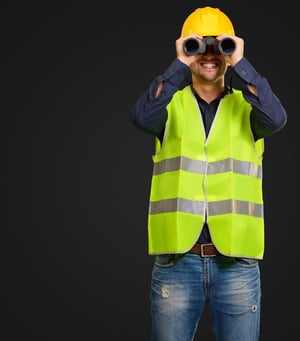 Here is where employees learn that. Back in high school, you would ask, “is this going to be on the test?” You needed to know the answer to that question because if what was being taught was going to be on the test, then you would learn it. Of course, you would. It is going to be on the test. You need to learn it.
Here is where employees learn that. Back in high school, you would ask, “is this going to be on the test?” You needed to know the answer to that question because if what was being taught was going to be on the test, then you would learn it. Of course, you would. It is going to be on the test. You need to learn it.
Something similar happens with frontline employees.
Supervisors are the people who score and assess the frontline employee. The supervisor is the test. So, whatever the supervisor does, employees do. Therefore, employees take their cues from their supervisor.
Whatever supervisors care about and focus on is what employees learn to care about and focus on.
-
- If a supervisor has strong safety values, you can bet that their discussions and team meetings center around safety.
- If the supervisor makes safety nothing more than a checkbox exercise, then employees will do just enough to meet the minimum requirements of safety.
- If supervisors push heavily on time and production, then naturally safety focus will drop.
- If supervisors are focused on quality and looking after their people, employees will be focused on looking out for each other and doing a great job the first time.
Employees do what supervisors do.
It's more efficient to convince one influencer than 10 employees.
As a safety manager or a senior manager, be aware that when supervisors push back on safety protocols, or paperwork, or reporting, their employees are likely to do the same. If the supervisor does not buy-in, the employees are less likely to buy-in and give only bare minimum effort to safety.
To shift the safety culture in your workplace requires you to get your frontline supervisors on-board first. Their teams will follow.
From an efficiency perspective, there is less effort required in getting one person (supervisor) on-board with safety than a team of ten employees. Let a supervisor’s positive example in safety do the work for you instead.
Safety Communications & Coaching for Supervisors
So, how do you get started?
I have created the corporate learning program called Safety Communications & Coaching for Supervisors (SCCS). It’s a 12-week program that features a weekly video module, coupled with follow-up discussion and conversation, mentoring with middle and senior managers, and lots of interaction.
SCCS is a program in which you or someone from your organization acts as facilitator. All of the tools, handouts, conversation starters, and coaching is all provided for you. The video modules are the weekly content, but you control the follow-up conversations, the interactions, the mentoring, and the pace of learning.
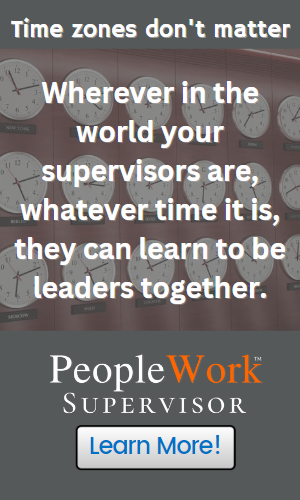 You can get the full details at KevBurns.com/SCCS
You can get the full details at KevBurns.com/SCCS
The greatest influence in safety is the example of an employee’s immediate supervisor. Employees will follow the lead of their boss because the boss holds the report card.
Put your effort into training supervisors to be more effective coaches and communicators who value safety. Their example will ripple through your organization.
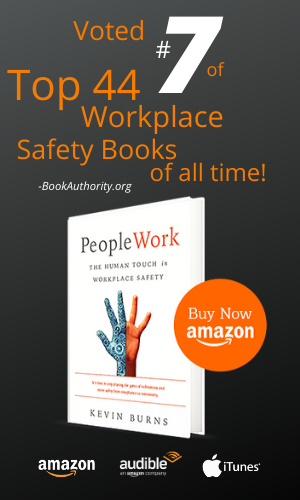 --
--
Kevin Burns is the President/CEO of KevBurns Learning. Kevin works with smart, caring companies to energize safety culture, build teamwork, and get employee buy-in.
--
In 2020, BookAuthority.org named PeopleWork #7 of The Top 44 Workplace Safety Books of All Time. Buy yourself a copy of PeopleWork: The Human Touch in Workplace Safety and give another as a gift to a colleague.
--
Subscribe to Kevin’s Blog.

